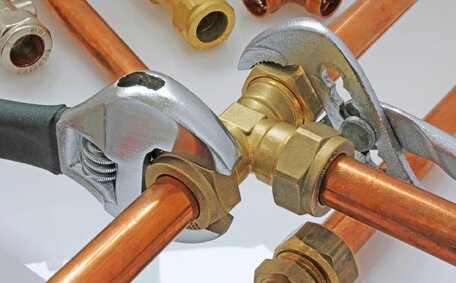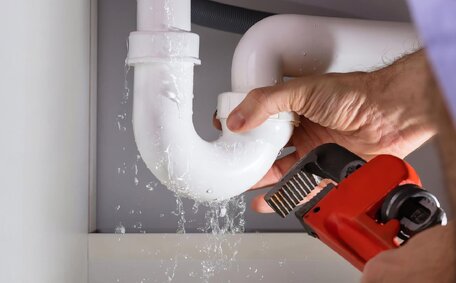Keep Your Gas Stove Clean for Safety and Efficiency
Understanding the proper way to clean your gas stove is crucial for ensuring both safety and efficiency. Monthly cleanings prevent food and grease buildup, reducing fire risks and ensuring optimal stove functionality, reflected by blue and even burner flames.
Food splatters and spills can harden over time, making it essential to clean each gas stove burner component to uphold safety, by removing stuck-on grime and maintain a hygienic appliance.
Debris can clog gas flow, resulting in uneven heating and yellow flame tips, which signal incomplete combustion on a gas stove top.
Here are some tips for clearing off any residue, ensuring your stove top remains spotless:
- Start by removing the grates, burner caps, and give burner heads and drip pans a thorough clean. Soak them in a baking soda and water solution to loosen burnt-on food. Employ a scrub brush or an old toothbrush to eradicate built-up grease, then use damp cloth to gently wipe the burner surfaces.
- Allow the mixture to sit for 15-20 minutes before cleaning the burner with a non-abrasive sponge or cloth.
- To clean gas burners with tough stains, create a potent baking soda and vinegar paste that works wonders on residue. Let it sit before scrubbing.
- Wipe the clean glass stove knobs burner area and the surface around the gas burners with a soft cloth, warm water and a small amount of dish soap.
- After a meticulous stove cleaning, rinse all components thoroughly and make certain they’re dry before you put them back in their proper position.
Regular cleaning and soaking parts in warm soapy water is key to maintaining your cooking surface’s safety and efficiency. Reassemble according to the manufacturer’s instructions, which may include special care recommendations.
Create a Regular Cleaning Routine
Establishing a consistent cleaning schedule is imperative for maintaining the safety and efficiency of your gas stove.
Deep clean the stove burners, grates, drip pans, and cooktop surface monthly.
Keep a spray bottle filled with a solution of hot soapy water and a bit of dish soap on hand for daily upkeep of stove grates. After cooking, Employ the solution to clean stovetop surface and wipe away food bits with a soft cloth or sponge while it’s still warm.
This prompt action prevents grease, grime, and food particles from setting in.
Remove the grates, burner caps and drip pans and soak them in hot, soapy water. Use a toothbrush or scrub brush to get rid of stuck-on gunk.
Create a baking soda paste with a 3:1 ratio of baking soda to water, and use it for scrubbing burners, grates, caps, and pans.
Check out more insights on effective cleaning solutions, such as misting the stove surface with a blend of white vinegar and warm water. Employ a gentle sponge or cloth to clean the glass top stove and maintain a clean electric stove by wiping down the entire surface. It’s important to consult the manufacturer’s guidelines before applying cleaners to glass ceramic stove models, this includes both electric and ceramic variants.
By adhering to a routine, you’ll find that maintaining a clean gas stove can become an efficient, regular task that ensures its pristine and safe operation for years to come.
Gather the Right Supplies
Cleaning your gas stove doesn’t require harsh chemicals - common household items are often sufficient. Stock up on baking soda, white vinegar, dish soap and water. Baking soda is a gentle abrasive that lifts grease when made into a paste.
You’ll also need the right tools for scrubbing.
Use small brushes like old toothbrushes with soap and warm water for tiny burner ports and supports. Durable scrub brushes are best for cleaning grates and burners, while microfiber cloths provide the perfect finish.
Avoid abrasive scouring pads or powders that can scratch your stove’s finish over time. Check the manufacturer’s instructions too - some surfaces like aluminium and porcelain may need special care. With the appropriate natural cleaners and tools, you can use them to preserve your gas stove’s appearance.
Remove and Disassemble Burner Parts
Ensure the stove is cold and off before starting. Begin by removing the grates and lifting the burner caps and heads.
Consult your stove’s manual for detailed disassembly instructions.
Remove any lingering food debris from the burner parts with a damp cloth infused with dishwashing liquid. Craft a baking soda water paste for those tenacious buildups and apply a toothbrush’s gentle abrasion. Rinse all parts and let them air dry completely before putting back on the stove.
Examine the burner ports and use a pin, needle or wire to gently clear any clogs, taking care not to enlarge the holes - the rest of your gas stove maintenance depends on this precision. The oven door and ports need to be completely unclogged for the proper gas flow and flame.
Soak removable drip pans in hot water if needed to loosen baked-on spills. Thoroughly dry every section, the smallest bits of food and moisture gone, before you reassemble your stove in line with the manufacturer’s advice.
Tackle the Grates, Burners, and Cooktop
A thorough clean of your gas grates, burners, and cooktop is essential for a spotless result. Begin by soaking the grates in hot, soapy water to loosen residue, then use a stiff brush for stubborn stains.
You can also make a paste of baking soda and water and let it sit on the grates for 15-20 minutes before scrubbing.
When it’s time to tend to gas stove burners, specifically the stainless steel ones, remove the caps and heads for soaking if required. Clean out burner holes carefully with an old toothbrush dipped in a baking soda paste to gently scrub the parts. Take care not to enlarge the ports, which can alter the gas flow.
Use damp microfiber or soft cloth to gently cleanse stainless steel cooktop surfaces, incorporating a splash of dish soap in warm water.
For steel gas control knobs, rub in the direction of the grain to avoid scratches. Rinse and dry completely. Always check the manual for any special care instructions.
After cleaning all burners and parts, rinse and dry them thoroughly. Dry properly to prevent rust on cast iron grates, ensuring that your burners and stove top will shine like new.
Make DIY Cleaning Solutions
To preserve your gas cooktop while complementing your kitchen aesthetic, concoct homemade cleaning solutions using everyday household ingredients. Here are some recipes for DIY gas stove cleaners:
Baking Soda Paste
Make a paste by mixing three parts baking soda with one part water that can even be used on tricky electric coil surfaces. Administer the paste to unyielding dirt that sits atop the grates, coil burners, and cooktop, employing a sponge or gentle cloth. Let sit for 15-20 minutes before scrubbing and rinsing.
Vinegar Spray
Mix equal parts white vinegar and warm water in a spray bottle. Apply the mixture to the surface and use a damp microfiber cloth to clean a greasy electric cooktop.
Mild Dish Soap and Water
Add a small squirt of eco-friendly dish soap to a bowl of warm water. Dip a soapy sponge or cloth into the solution to wipe down the entire stove surface after cooking.
With these simple homemade cleaners, you can keep your gas stove looking spotless while avoiding harsh chemicals.
Rinse and Dry Thoroughly
It’s vital to rinse away all residues of the cleaning solution thoroughly after cleaning. Leftover chemicals can be harmful, so ensure no traces remain by rinsing with clean water.
Be diligent in drying, particularly metal parts. Ensure grates, burner caps, and other components are fully air-dried before reassembly to prevent rust and corrosion.
For a spotless outcome, the last step in the cleaning stove process is buffing the grates with a soft cloth, once they’re fully dry. Ensure drip pans, burner heads and the cooktop are completely moisture-free as well.
Proper rinsing and drying is key to keeping your gas stove looking like new after cleaning. It also maintains safety by preventing blocked ports or valves from chemical residues.
Reassemble and Check for Proper Functioning
Once all parts are cleaned and dried, it’s time to reassemble your gas stove.
Before using the stove, it’s vital to ensure all parts your stove contains are functioning properly with a mostly blue and steady flame - any yellow tips or a wavering flame can indicate a problem. If needed, use a pin to gently clear any remaining debris from the burner ports.
Turn on each burner, starting on low. Listen for any hissing or irregular sounds as well.
If a burner doesn’t ignite, check that the gas is turned on and try relighting. Always make sure all parts are completely dry before turning the stove back on to prevent any issues.
For older stovetop models, consider whether cleaning optimises performance or if you need replacements for parts like the igniter. Refer to your owner’s manual for troubleshooting tips.
I don’t envision any difficulties in upkeeping your appliance through routine monthly cleans and diligent reassembly to keep it looking its best for years to come.
Before using the stove, it’s crucial to check that the burners are functioning properly.
The flame should be mostly blue and steady - yellow tips or a wavering flame can indicate a problem.
Maintain Cleanliness Between Deep Cleans
Regular cleanup between monthly deep cleans is essential. Wiping down the stove after each use prevents the buildup of grime and grease, making it easier to maintain a clean appliance.
Form the habit of wiping the stove surface while it’s still warm post-cooking. A solution of diluted white vinegar or dish soap and water can effectively clean up spatters, and it’s practical to have these as ready-to-use sprays.
For stuck-on bits, immediately use a sponge wipe to gently scrub them away before they have a chance to bake on. Periodically inspect the burner ports and lightly brush or blow away any food particles.
Daily maintenance minimises the need for extensive scrubbing during deep cleans. A gas stove maintained between regular cleanings looks neater and performs optimally over time.






